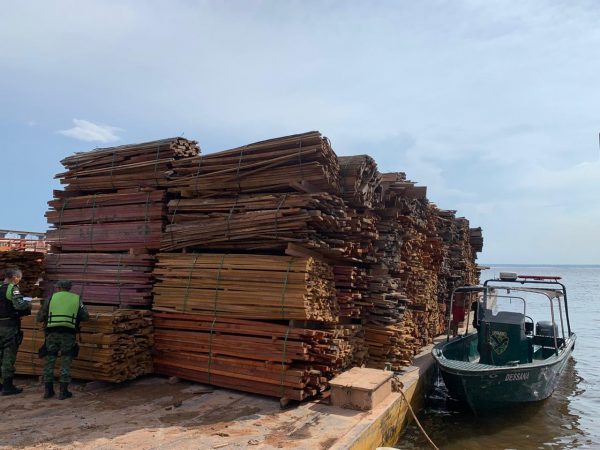Pandemic is related to the record of deforestation in 2020 in the Amazon
26 de January de 2021

Marcela Leiros – From Cenarium Magazine
MANAUS – In Brazil, the Deforestation Alert System of the Institute of Man and Environment of the Amazon (Imazon) indicated earlier this month that the states of Pará, Amazonas, and Mato Grosso led the deforestation rates in 2020. Also according to the institute, 2020 broke the record of deforestation in the last 10 years.
According to Imazon, deforestation in the Amazon grew by 30% last year. Between January and December 2020, the forest lost 8,058 km² of green area. Compared to 2019, 6,200 km² of the forest was cut down. Only in December 2020, satellites recorded 276 km² of devastation, which also means a record for the decade.
According to Dr. André Luiz Mendonça, professor at the Department of Forestry Sciences at the Federal University of Amazonas (Ufam), deforestation is directly related to the country’s economic situation and is stimulated by activities that are profitable. Therefore, the record of deforestation in 2020 may be related to the industrial disincentive caused by the Covid-19 pandemic.
“Because of the pandemic, we have several situations, such as the greatest need for primary economic activities and also less inspection in the forest areas. People are looking for new activities and ways to make money in agriculture and livestock”, said André Luiz.
Ranking
In the ranking of the states that most deforested the Amazon in the past year, Pará appears in the first place, with 42% of all deforestation recorded in twelve months. Next comes Amazonas (17.2%), Mato Grosso (13.4%), Rondônia (12.9%), Acre (8.5%), Maranhão (2.9%), Roraima (2.5%) and , finally, Amapá (0.3%) and Tocantins (0.3%).

According to André Luiz, Amazonas did not suffer as much from deforestation due to later population occupation and greater geographical barriers caused by the excess of conservation units. “Over time, pressure begins to happen on states that are on the border with Amazonas, such as Pará and Mato Grosso, to open more roads and drain production from those places that have more intense agricultural and livestock production”, he recalled. André Luiz.
Among municipalities in the country, six of the ten that were most targeted by deforestation between January and December 2020 are located in the state of Pará. Altamira (575 km²) and São Félix do Xingu (447 km²) lead the list. The Apyterewa indigenous land in Pará was the indigenous land with the most deforestation alerts detected by the Imazon monitoring system, with 82 km² of total deforested area.
Ipês are the most coveted
In partnership with the Federal Public Ministry (MPF), the Federal Police (PF) seized in December 2020 more than 130 thousand cubic meters of wood illegally removed from the forest. The more than 43,700 logs were deforested from Pará along the Mamuru and Arapiuns rivers, in a region bordering the Amazon, close to Parintins (369 kilometers from Manaus).
The environmentalist Carlos Durigan explained that illegal logging is carried out without any good management practice, which leads to great impacts, both on exploited and logged species, as well as in the entire area where they occur, with the irregular opening of branches and trails for access to areas and extraction.
What caught the attention of the MPF was the number of trees of the species ipê seized in the operation. The species is the most explored in the Amazon region, according to consolidated data from Operation Archimedes.
“Contrary to what the current federal government has been doing, it is necessary to strengthen the control bodies and their performance, in addition, work to strengthen the initiatives for sustainable management of the forest. There are many experiences in the Amazon aimed at the sustainable use of natural resources promoted by universities, research institutions, companies, communities, and NGOs”, highlighted the environmentalist in a recent interview with Cenarium Magazine.
The Ipê tree is tall, well-cut, and during the flowering period, it has a peculiarity: it is completely devoid of leaves and is the species most smuggled by the illegal wood market that operates in the Amazon.

